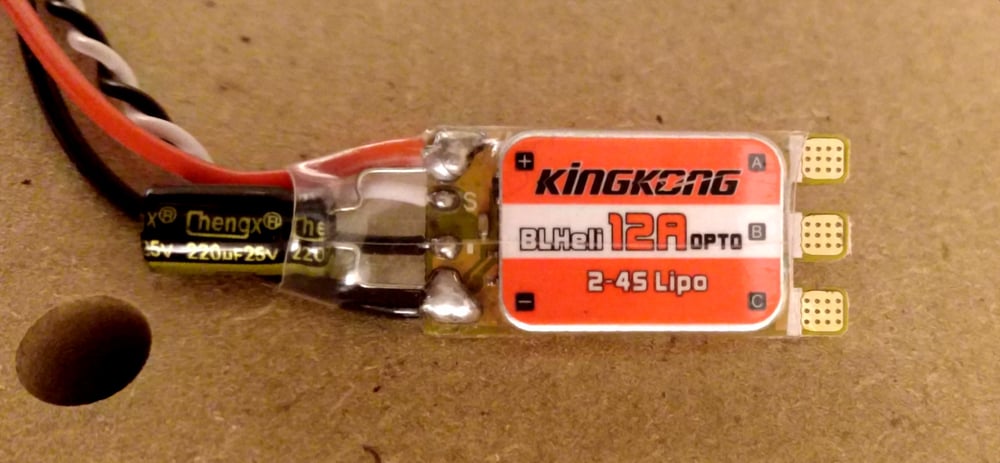BTR8 8A 4S brushed beetleweight ESC
£8.00 Sold out

Originally developed for my beetleweight, The O'Neill, and currently used by Bugglebots S1 champion, K2. They will each run 2 standard 22 or 25mm motors.
Note that these have been discontinued by the manufacturer. Once my stock is gone, they won't return - I will have some replacements in 2020, but probably at higher cost. Due to the limited availability, I'm only shipping them to UK addresses.
Ignore the label - these started their life as brushless ESCs, but they're now flashed with my brushed firmware (developed since 2017), which supports regenerative braking. This means that when you command a motor to go from a higher speed to a lower speed, the ESC will actively be braking the motor rather than just letting it coast - which significantly improves handling for bot drive.
If you ever decide to switch to brushless drive, you can reuse these ESCs by flashing them with simonk (the 'bs_nfet' configuration).
Specs:
Continuous current: 8A
Peak current for 30s: 12A
Max voltage: 4S / 16.8V
BEC: no
Dimensions: 50mm x 15.5mm x 8mm including the capacitor, 31mm x 15.5mm x 6mm for the PCB only
Weight: 7.5g
Note that for these ESCs you need to solder the motor wires (included) to the PCB yourself - see the second image.
Important note
My firmware implements safe start - meaning that the ESC won't arm until it detects an RC input in the neutral position. This is so that your robot won't drive away if you turn it on with a misconfigured RC system. A consequence of that is that your ESC might not arm until it's been calibrated for your specific radio. Follow the calibration procedure if this is the case.
Calibration
These implement a calibration procedure similar to the simonk firmware: to enter calibration mode, hold the radio stick mapped to the ESC's channel at the upper end of the range (see note below) and only then power on the ESC. If there is a motor connected to the ESC, you should hear 4 beeps. Then move the stick to the lower end of the range. You should then hear 3 beeps. After that, you can release the stick to the neutral position - and you should hear 2 beeps to indicate that the ESC is armed.
Note: by upper or lower end of the range we mean a logical high or low RC signal respectively. These may be shown as 100 and -100 by your radio. Depending on whether mixing is enabled, these may or may not correspond to the top and bottom positions of the physical radio stick used for driving. If you are struggling getting into calibration mode, it may be easier to use the throttle channel for calibration.
Troubleshooting
If a motor is connected to the ESC, you should be able to hear it emit a sequence of beeps that indicate its progress in initialising when powered on. This is what the number 0f beeps that you may hear indicates:
0 - The ESC isn't powered, or a motor is not connected to the ESC. Check your wiring. Note that the beeps may be fairly quiet depending on the motor you're using.
1 - The ESC is powered, but it's not receiving a neutral RC signal. Check that a receiver is connected to the ESC, that the receiver is powered (these ESCs have no BEC) and that the drive stick is in the neutral position. See the instructions above for calibration
3 - The ESC is powered and it's received a valid neutral RC signal. It's armed and ready to drive your bot!
4- You've entered calibration mode. If you don't want to override the calibration settings of the ESC, disconnect the power without doing the calibration procedure. Then return the drive stick to the neutral position and power on the ESC again.
Shipping with Royal Mail First Class.
